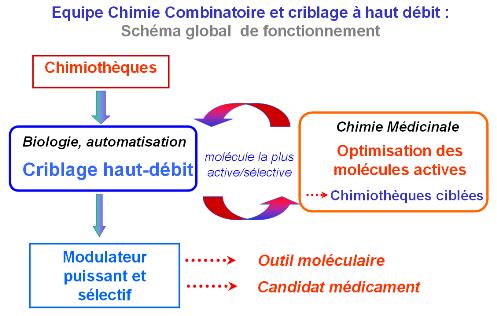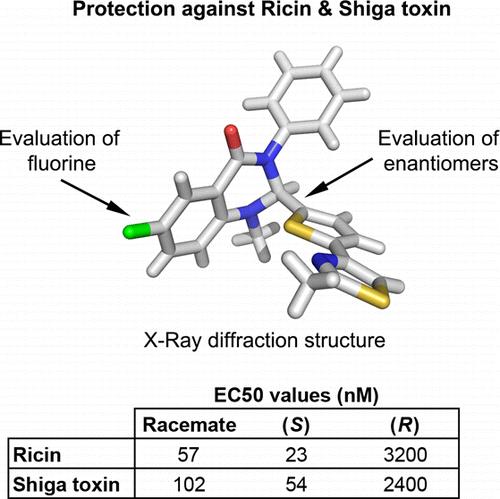By associating combinatorial chemistry and equipment of high-speed biological screening, the team is interested in the discovery and optimization of new bio-active molecules. The team is involved in several projects carried out in the context of various collaborations, with potential applications in medicine and the fight against biological risk.
The high-throughput screening platform of the SCBM/LCB is certified IBiSA. 
Manager
Jean-Christophe Cintrat
Jean-Christophe.CINTRAT@cea.fr
The team of JC Cintrat
Research themes revolve around organic synthesis and medicinal chemistry. After identifying bioactive compounds by high-throughput screening, the team can take charge of their chemical optimization (structure/function relationship study) either to improve the initial activity or to increase the solubility. In the case of phenotypic screens (cellular screening for which the target is not known), the team can also manage the design and synthesis of probes for the identification of the target. Mainly based on target-fishing approaches via photoactivable radiolabeled probes, this approach can also be coupled to "click chemistry" to use affinity techniques to identify these targets. The team also contributes to the national chemical library through the provision of an internal chemical library for the unit.

Identification of toxins inhibitor compounds
As part of the research and development program CBRN-E and in collaboration with the Daniel Gillet's group (SIMOPRO), we identified by high throughput screening three compounds capable of blocking the deleterious action of two toxins (ricin and Shiga toxin) on human cells. By chemical optimization, we were able to increase up to a factor of 1000 the initial activity of one of the hits obtained from the screening. These molecules, which act by blocking the toxin retrograde transport and not directly on the toxin, also showed activity against other pathogens using the same traffic pathway in the cell (such as parasites). The elucidation of the mode of action of these compounds is in progress.

Partnership
The team is also part of the LERMIT LabEx and as such engaged in two projects, one to identify by high throughput screening new antibacterial compounds, the second in the field of anticancer molecules.